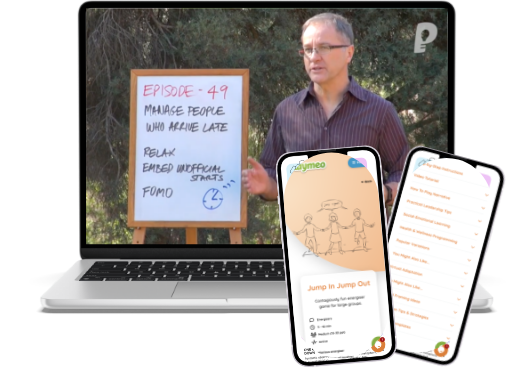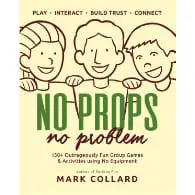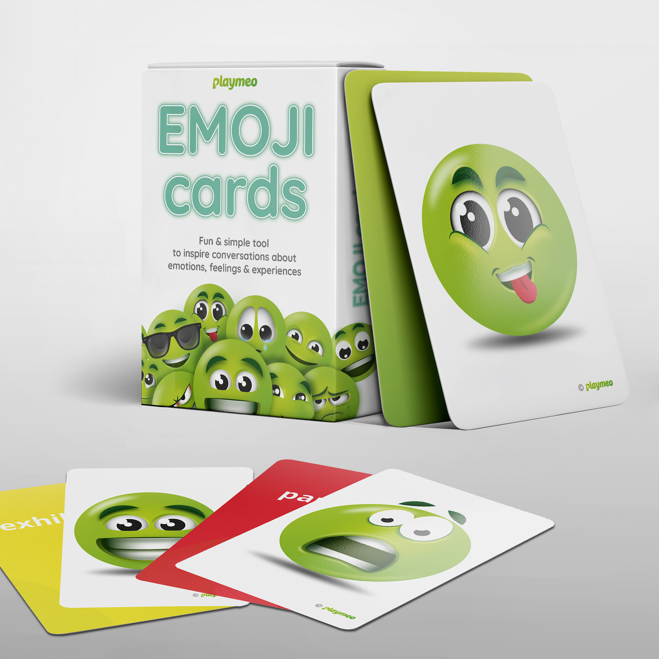20+ Fun & Engaging Ways to Form Random Pairs
So you’ve asked your group to pick a partner so that you can form smaller teams and… they immediately make a beeline to their best…

Not all ice breaker activities are created equal.
If you’re looking for icebreaker activities that won’t cause your team to groan, yawn or roll their eyes, you’re in the right place.
Icebreakers are experiences that allow your team to get to know each other better and aim to develop stronger, more comfortable relationships. Their ultimate purpose is to amplify your team’s performance.
To be effective, ice breaker activities, especially team ice breaker games used alongside teambuilding exercises, must be fun and invite your team to interact in a non-threatening manner. They are always success-oriented and require minimal verbal and decision-making skills.
We asked 4,500 playmeo members to share their favourite icebreaking activities. This is their top ten list, all drawn from playmeo’s ever-expanding online database of group games & activities.
Every icebreaker activity comes with simple step-by-step instructions so you can be sure to get the same results we do. Most can be adapted for use as small group icebreakers and icebreaker games for work, too.
Best of all, you won’t find this list anywhere else, ie they have been curated by a human who leads games for a living (and not a robot.)
Click the links below to scroll directly to the activity.

Never be short of activity ideas again. Sign-up today. Upgrade or cancel at any time.
It’s no surprise this icebreaker sits atop the list. It’s easy to deliver, it has so many variations, and groups enjoy playing.
Here’s how to lead it.
Group Size – 2+
Time to Play – 5 to 10 mins
Apart from being 100% interactive, this fun icebreaking activity honours choice and invites team members to share in pairs, which means people can share in a safe place.
Oh, and having lead it 100s of times during the pandemic, it also works perfectly well with virtual audiences (check out the video below to see how it’s done:)
Here’s how to lead it:
Group Size – 2+
Time to Play – 10 – 15 mins
The stronger the connections in your group, the more you can amplify their performance, and this group game does this in spades. You only need a space large enough to form a large circle, and no props are required.
To see me lead this in action with a live group, click the play button below:
Here’s how to lead this popular icebreaker:
Group Size – 10+
Time to Play – 5 to 10 mins
Tere is so much to love about this exercise, it’s hard to pull away from it after 4 or 5 rounds. The sky is the limit when it comes to the types of questions you could ask, but always start with something easy – such as Sunset or Sunrise – and then build up to something that involves a bit more thought, such as Woudl you prefer to be rich in a job you hate or poor in a job you adore?
Follow these instructions to lead this fun game:
Group Size – 10+
Time to Play – 15 to 20 mins
This is one of those games you wish you had thought of a long time ago. And, most groups are equipped to play at almost any time, anywhere.
Here’s what you need to do:
Group Size – 2+
Time to Play – 10 to 15 mins
When I first learned this energiser (as a participant) I was struck by how simple the activity was at generating lots of random interaction. But, by simply adding a bunch of opportunities that invited partners to share, it transformed this exercise into an awesome ice-breaking experience.
Here’s how to play:
Group Size – 10+
Time to Play – 15 to 20 mins
This interactive group game is ideal if you are looking to celebrate commonalities and differences within groups. You’ll need a few minutes in advance to prepare a set of Are You More Like… cards, but you can use them over and over again.
Here are the step-by-step instructions to play this game:
Group Size – 10+
Time to Play – 10 to 15 mins
This interactive group game punches well above its weight in terms of impact. It’s easy to present, play and always triggers bursts of laughter towards the end of the activity.
Here’s what you need to do:
Group Size – 12+
Time to Play – 10 to 15 mins
One of the best parts of this highly interactive game is the enormous number of ways you can present the various greetings. I’m pulling from a long list of 20+ fun, interactive greetings to bring you this fun icebreaker.
And if you’d like to see what it looks, sounds and feels like, click the play button below to see it led by a facilitation expert in Nate Folan:
Here’s what you need to do to amplify the energy of the start of your program:
Group Size – 20+
Time to Play – 2 to 5 mins
I’m glad this activity made the cut-off for the Top Ten list because it sits inside my top 3 or 4 interactive icebreakers. Indeed, I could easily lead 2 or 3 hours of interaction using this one highly versatile resource.
If the word “ubuntu” is unfamiliar to you, it literal translation from the Zulu language is “I am because we are.” Everything you do with these cards is designed to identify things in common with others and celebrate diversity.
To see UBUNTU Cards in action, check out this video of me leading it with a group of PE teachers.
Armed with a deck of UBUNTU Cards, this is one of many dozens of ways you can use this resource to break the ice:
Admittedly, it is difficult to substitute a deck of UBUNTU cards with something else, but I promise you – it is well worth the small investment for your team. You WILL use these cards over and over again.
Group Size – 8+
Time to Play – 10 to 30 mins
There are five key ingredients of an effective icebreaker. That is to say, simply playing games at the beginning of your program does not mean they will work to break the ice. Indeed, in many instances, what you may refer to as an icebreaker may, in fact, be an ice-maker!
For an experience to be effective, it must be fun, highly interactive, non-threatening, simple, and success-oriented.
Click the button below to search, filter and sort 100s of icebreaker activity options.
Search Ice Breaker Activities

Best-selling book featuring 150+ fun group games & activities. Scan QR codes to access digital content including videos.

Brand new deck of cards featuring emoji images to help you inspire conversations about emotions, feelings & experiences.
Download our free 28-page ebook jam-packed with outrageously fun activity ideas.
Just one more question:
Share this with friends and colleagues.
We offer a range of membership plans with no surprises.
Click an option below & discover our simple pricing.

Click here if you’re a:

Click here if you represent a:
Explore plans for
10, 50, 200 or more
potential users
four thousand five hundred voters! wow.
Yep! And.. you may have been one of them, JeWElle. If you have ever Liked any of playmeo’s activities, then you voted.
yeyyyyy!